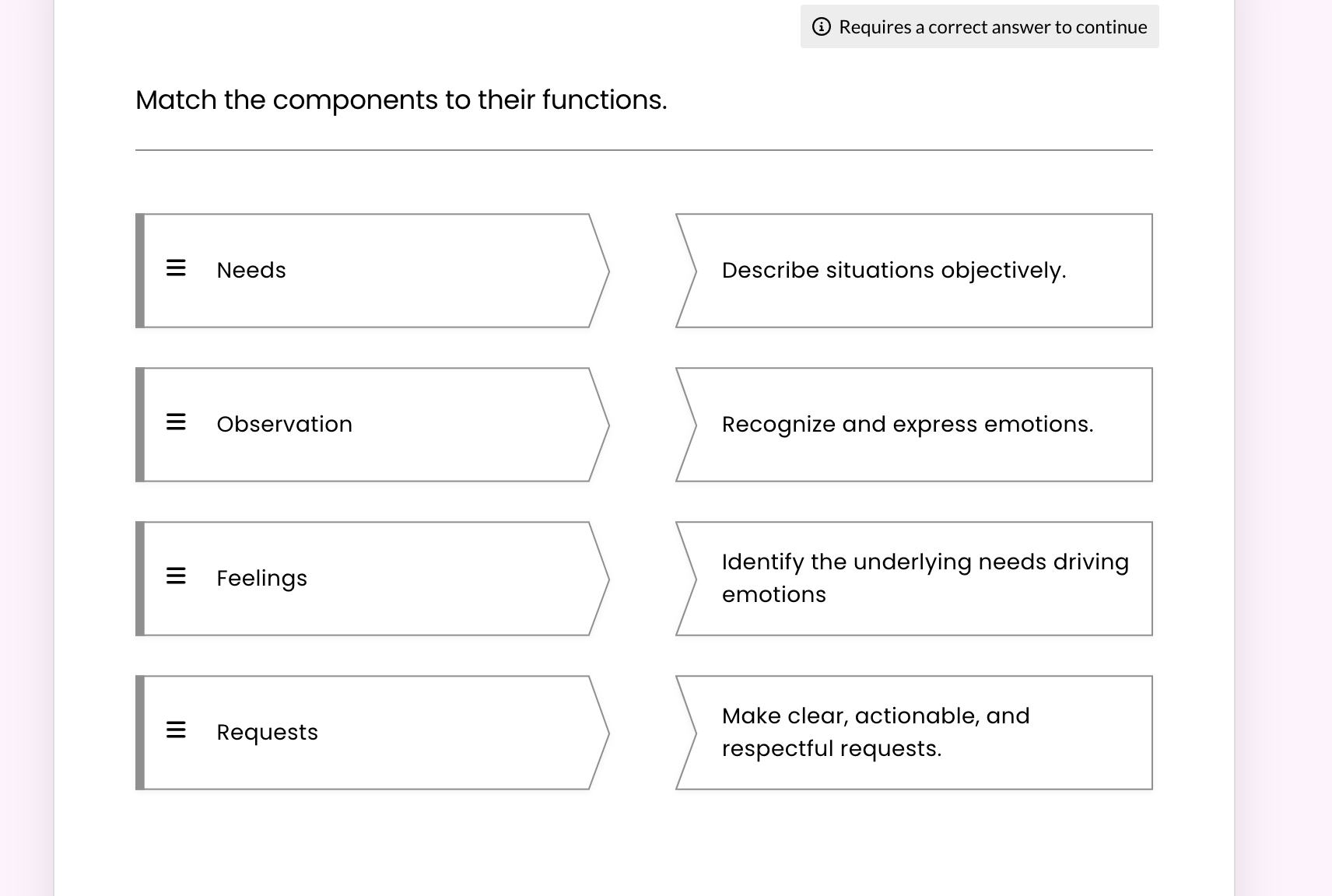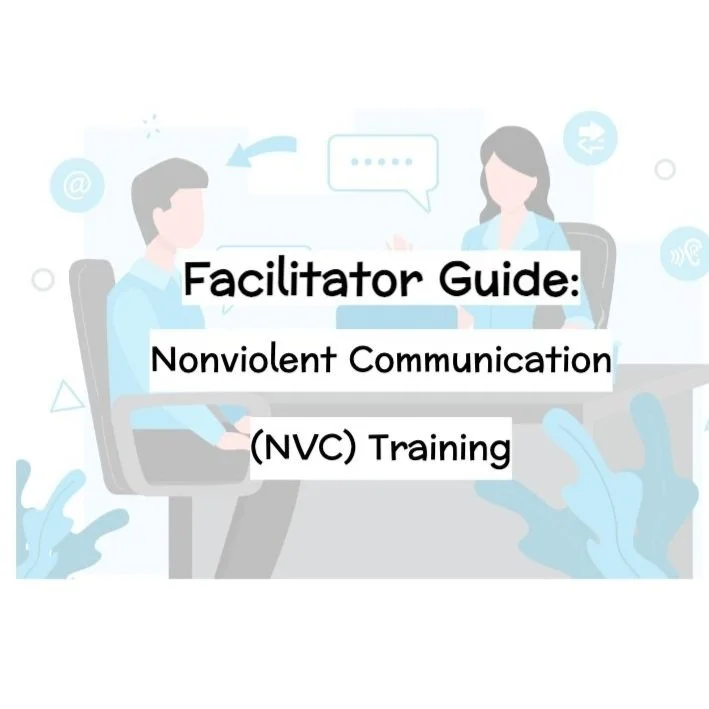Non-Violent Communication
This project includes a facilitator guide, RISE 360 training, and handouts to provide step-by-step instructions for the trainer to deliver Nonviolent Communication (NVC) training tailored to a ceramic studio environment. The training aims to improve customer satisfaction, enhance employee collaboration, and foster a welcoming, inclusive atmosphere. Trainers will use this guide to prepare, deliver, and evaluate the training, ensuring behavior change and organizational impact.
Audience: Staff with various experiences in a ceramic studio environment.
Responsibilities: Instructional Design, eLearning Development
Tools Used: Articulate Rise 360, Google Docs, Google Slides
Process & Learning Goals
After meeting with the client and SME, it was decided that an in-person training based on Non-Violent Communication need to be developed to improve customer satisfaction, enhance employee collaboration, and foster a welcoming, inclusive atmosphere.
Learner Goals:
Differentiate between observations and judgments.
Demonstrate active listening and respond in a way that validates concerns using empathetic statements.
Identify emotional cues in self and others
Active listening, reflective statements, calm tone/body language.
Use de-escalation techniques to resolve customer frustrations or conflicts.
Promote inclusivity through language and behaviors.
To ensure the manager was prepared to deliver the training, an eLearning module was created in Articulate Rise.
Non-Violent Communication
Non-Violent Communication
Try out the 5-minute learning that introduces trainers to NVC to better support their employees!
Evaluation
In this section, you will find the form used to assess the learning. Click on the images to access the materials.
Full Development
The following materials were developed for this project:
Articulate Rise Mini-Lesson
NVC Framework Handout
Role-Play Scenarios (Linked Here)
This customized facilitator guide provides step-by-step instructions for the trainer to effectively deliver Nonviolent Communication (NVC) training tailored to a ceramic studio environment. The training aims to improve customer satisfaction, enhance employee collaboration, and foster a welcoming, inclusive atmosphere. Trainers will use this guide to prepare, deliver, and evaluate the training, ensuring behavior change and organizational impact.
Click on the images to access the materials.




